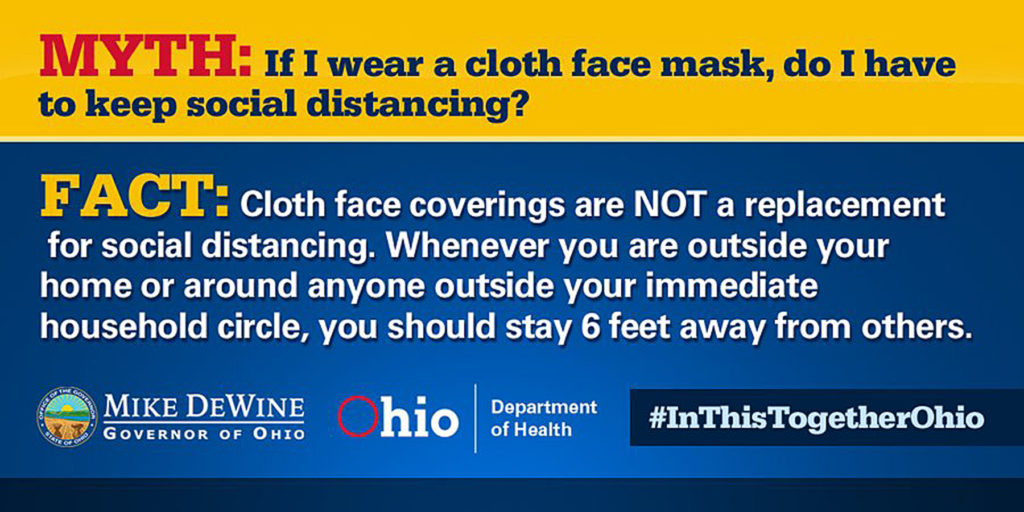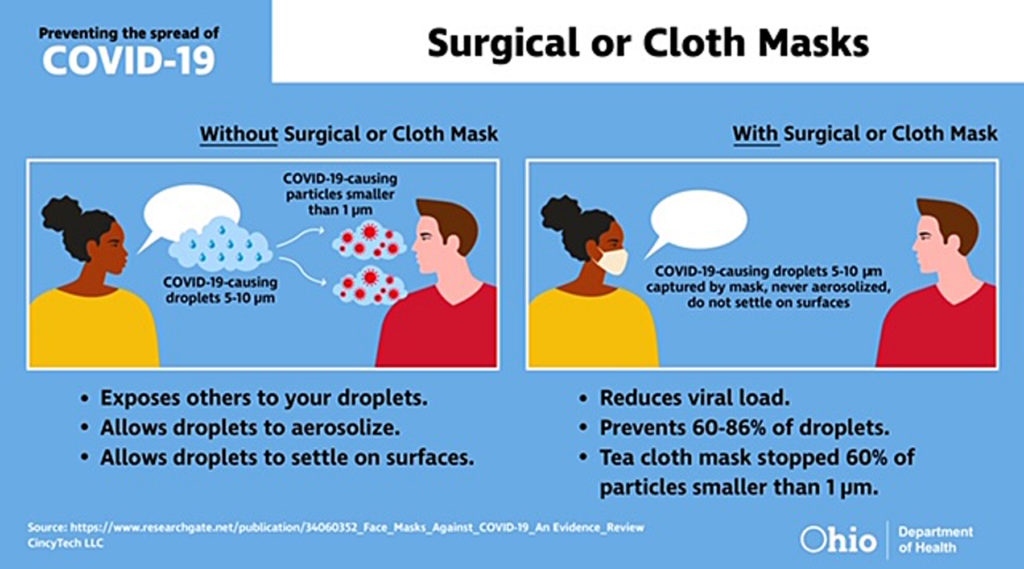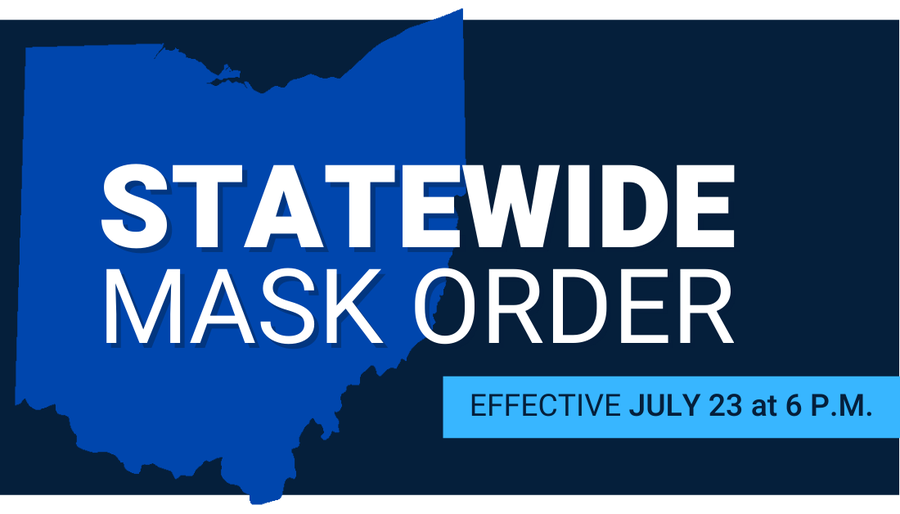

By Brett Milam
Editor
The State of Ohio becomes the latest state in the United States to make masks mandatory to help get the coronavirus under control. The mask mandate begins on July 23 at 6 p.m.
More than half of the states in the country (at least 29) now have mask mandates.
There were 1,527 new cases reported in Ohio on July 22, second only to the record of 1,679 new cases reported on July 17.
In total, there have been 78,742 cases in Ohio, with 3,235 deaths, 9,864 hospital admissions, and 2,386 ICU admissions.
As of July 22, Clermont County has 635 cases, with an additional 36 probable cases. There have been eight confirmed deaths, and one probable death. Throughout the pandemic, there have been 68 total hospitalizations, with 449 individuals recovered. There are 213 active cases.
A probable case is used when a patient shows the symptoms of COVID-19 without a diagnosis of another illness and when a COVID-19 test is not performed, according to Clermont County Public Health.
“We know that masks work, and if the vast majority of us would wear them, it will matter a lot,” Governor Mike DeWine said at his daily press conference on July 22 announcing the coming mandate.
Masks must be worn at all times when:
– At an indoor location that’s not a residence.
– Outdoors, when unable to keep 6 feet social distance from those not in your household.
– When waiting for, riding, driving, or operating public transportation -taxi, car service, private rideshare.
This order only requires those who are 10-years-old or older to wear a mask, DeWine said.
Those with medical conditions, disabilities or those communicating with someone with a disability do not have to wear a mask. Additionally, the mask mandate does not apply to those who are actively exercising or playing sports, officiants at religious services, those in public safety, and those actively eating or drinking.
“Wearing masks will make a difference. It will determine what our fall looks like. We want kids to go back to school, we want to see sports — to do that it’s very important that all Ohioans wear a mask,” DeWine said.
Evidence continues to mount of the efficacy of wearing a mask as one of the easiest ways to stop the spread of the coronavirus.
The Centers for Disease Control, the Surgeon General Jerome Adams, CCPH Health Commissioner Julianne Nesbit, and numerous other officials and scientific studies have shown that masks are one of the easiest and most effective ways to suppress the spread of the coronavirus is to wear a face cloth covering.
“Early in the pandemic, the usefulness of the masks was not fully understood,” Nesbit told The Sun last week. “But, as we have learned more, there is increasingly more scientific evidence that shows the usefulness of face masks. The masks limit the spread of respiratory droplets when a person coughs, talks, or sneezes. The virus particles are transported in the respiratory droplets. So, if the droplets that may contain virus particles are contained and prevented from traveling further distances, it can protect the people around you.”
Robert Redfield, CDC director, said on July 14, that if everyone in the United States wore a mask, the pandemic could be under control within four to eight weeks. Those remarks came during a discussion with the Journal of the American Medical Association.
Redfield pointed to those numerous scientific students that show as much. For an example from JAMA, the largest healthcare system in Massachusetts was seeing exponential spread of the virus among its 75,000 employees in March before a mask mandate. After the mask mandate, positive tests declined.
“Community-level protection afforded by use of cloth face coverings can reduce the number of new infections and facilitate cautious easing of more societally disruptive community interventions such as stay-at-home orders and business closings,” authors of the study noted.
In another case, a hair stylist in Missouri tested positive for the coronavirus after working with clients for eight days in May. A second hair stylist did as well. A total of 139 clients were directly serviced by both, but everyone involved was wearing face coverings.
None of the 139 clients had COVID-19 symptoms or tested positive for the virus, nor did any secondary contacts.
“As stay-at-home orders are lifted, professional and social interactions in the community will present more opportunities for [the] spread of SARS-CoV-2. Broader implementation of masking policies could mitigate the spread of infection in the general population,” the CDC study’s authors stated.
Read those respective studies in full here and here.

